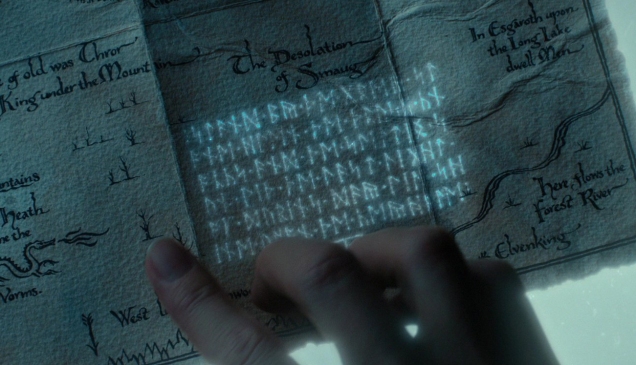Recently, I’ve been working on a new method of fleshing out the finer details of my novel-in-progress. I like to call it a Wiki, even though it’s not necessarily hosted online anywhere. I spent a couple of hours looking at various wikis for such worlds as Westeros, Midkemia, Warhammer 40K Universe and Middle-earth. I looked at character pages, location pages and other miscellaneous pages for objects, historical events etc. Now, I love looking through wikis, Wikipedia being my favourite, and I love the way that the information is presented. It’s easy to read, quick to find important information and fun to explore.
Here’s a nice example from A Wiki of Ice and Fire:
Jon Snow
Jon Snow is the bastard son of Eddard Stark, by a mother whose identity is a source of speculation. He was raised by his father alongside his true-born half-siblings, but joins the Night’s Watch when he nears adulthood. He is constantly accompanied by his albino direwolf Ghost. At the beginning of A Game of Thrones, Jon is fourteen years old.
Character and Appearance
Jon was raised by father Eddard Stark, alongside his true-born half-siblings. Eddard always treated Jon the same as his trueborns and Jon got on well with his half-siblings, particularly with Robb and Arya. Jon always had issues with his bastardy and eventually chose to join the Night’s Watch, where the circumstances of his birth were of little importance.
Jon has strong Stark features. He has a lean build and a long face, with dark hair and grey eyes.
History
Ned brought Jon back after he returned from Robert’s Rebellion and insisted on raising him with the rest of his family. Jon got along with most of the Stark family, but Catelyn always considered him an outsider and his presence served as a constant reminder of her husband’s infidelity.
Yada yada yada…
As you can see, there are nicely defined sections, the information is concise but descriptive and in just a few paragraphs we already have pretty much a decent character profile. Depending on which character I am dealing with, I like to have an additional section on Equipment & Attire, too. As I write the wiki page, my character is growing and forming in my mind and I can gradually add more details about them as I go along. As I develop my story’s plot, I go back to the wiki and add the individual characters’ progression through the plot. Check out the example below:
Recent Events
A Game of Thrones
When the family encounters the direwolf pups after Gared is executed for deserting the Night’s Watch, Jon takes the albino pup, as it is an outcast from its litter. Jon’s position both inside and outside the family subtly chafe him over the years until, when he nears adulthood, he joins the Night’s Watch.
Tyrion Lannister accompanies Jon to the Wall, and their friendship is fostered by their shared position as noble outsiders. Jon is initially resented by the other Watch recruits because of his noble background, but he eventually learns to fit into the crowd. His actions towards his fellow recruits exacerbate the lasting enmity from the caustic master-at-arms, Alliser Thorne. Jon also protects Samwell Tarly from bullying by some other recruits.
Lord Commander Jeor Mormont appoints Jon as his personal steward and squire in order to groom him for command. During a wight attack on Castle Black, Jon saves Mormont’s life and receives serious burns on his hand. Mormont gives him the Valyrian steel bastard sword, Longclaw, of House Mormont, and has a direwolf head engraved onto the pommel in honor of House Stark.
Although Jon has learned to fit in with the Watch, he has difficulty separating from his old life. At the outbreak of the War of the Five Kings, he tries to desert to join Robb’s army, even though the common penalty for deserting the Night’s Watch is death. His new friends bring him back, however, and save him from this fate. Jon finally decides to honor his bonds and abandon his Stark past.
I go through a similar process for non-character pages. Let’s take an example from the LOTR Wiki on the Rangers of the North:
Rangers of the North
The Rangers of the North, also known as Watchers or simply Rangers, were the last remnant of the Dúnedain who had once populated the Northern-kingdom of Arnor.
The Rangers usually wore grey or dark green cloaks with no identifying ornaments except a six-pointed cloak-clasp in the shape of a star. Another identifying feature was that all of them wore a green longcoat. Equipped primarily with swords and bows, they were quick, versatile, and experienced riders.
History
Characteristically elusive and enigmatic, the Rangers spent most of their lives in the wild, visiting towns and villages only on rare occasions. The Rangers were led by Chieftains. These Chieftains could trace their lines back to Isildur himself and his father Elendil. Though the Chieftains were designated figures of authority for the Rangers, the scattered people had no official headquarters or capitol after the disintegration of Arnor and possibly lived in temporary camps scattered about the wilderness…
Etc. etc. etc…
The pages for events, organizations, weapons or ideas are much shorter than that of a character’s, usually. They contain less sections and sub-sections because characters are usually much more complex than objects, places and concepts. Usually.
Once I’ve completed the individual wiki pages I like to combine them all into one file and keep it on my hard drive with my other project files. If I ever need to look something up or add a detail to my world, I just open the wiki and do what I need to do.
At some point over the next month I’m going to put together my own method of making really nice antique fantasy maps in GIMP, a free Photoshop clone. I guarantee you won’t want to miss it!
~ James






